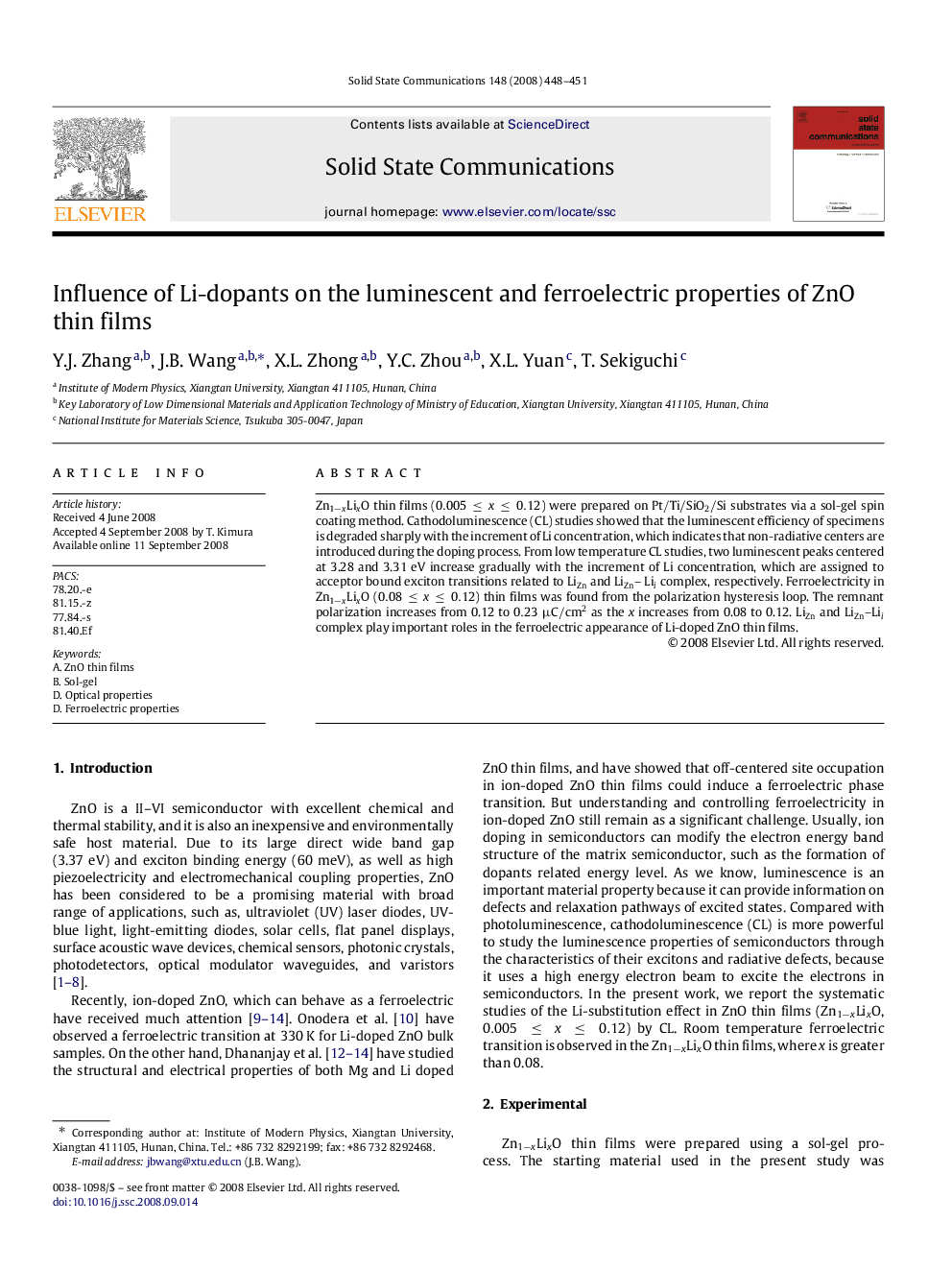| Article ID | Journal | Published Year | Pages | File Type |
|---|---|---|---|---|
| 1594230 | Solid State Communications | 2008 | 4 Pages |
Zn1−xLixO thin films (0.005≤x≤0.120.005≤x≤0.12) were prepared on Pt/Ti/SiO2/Si substrates via a sol-gel spin coating method. Cathodoluminescence (CL) studies showed that the luminescent efficiency of specimens is degraded sharply with the increment of Li concentration, which indicates that non-radiative centers are introduced during the doping process. From low temperature CL studies, two luminescent peaks centered at 3.28 and 3.31 eV increase gradually with the increment of Li concentration, which are assigned to acceptor bound exciton transitions related to LiZn and LiZn–Lii complex, respectively. Ferroelectricity in Zn1−xLixO (0.08≤x≤0.120.08≤x≤0.12) thin films was found from the polarization hysteresis loop. The remnant polarization increases from 0.12 to 0.23 μC/cm2 as the xx increases from 0.08 to 0.12. LiZn and LiZn–Lii complex play important roles in the ferroelectric appearance of Li-doped ZnO thin films.
